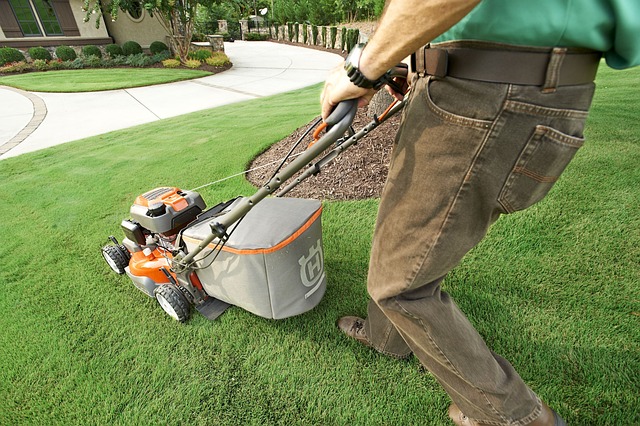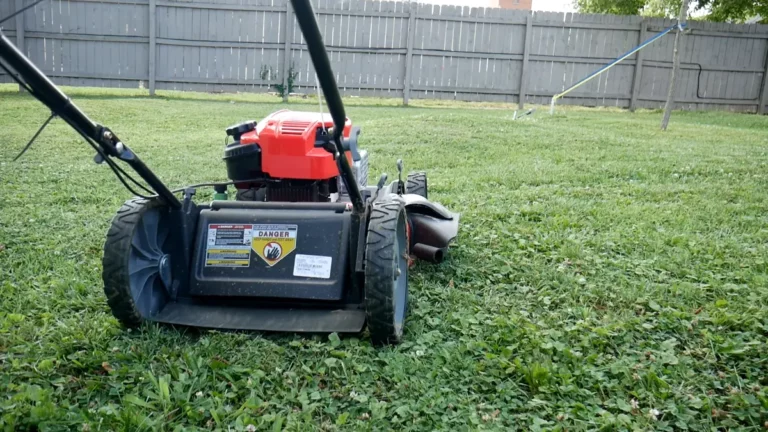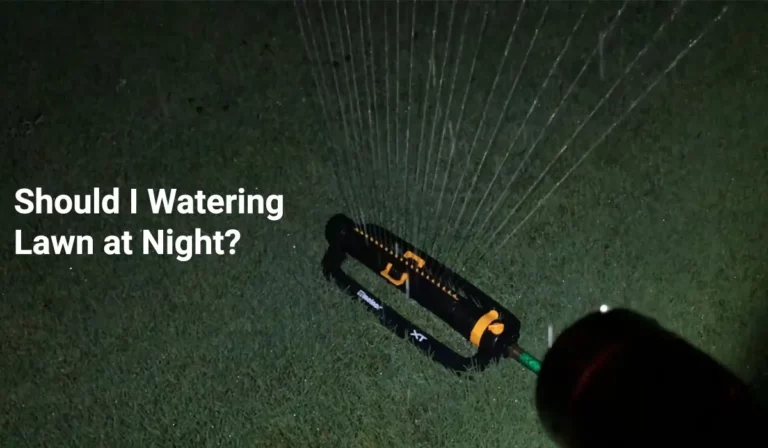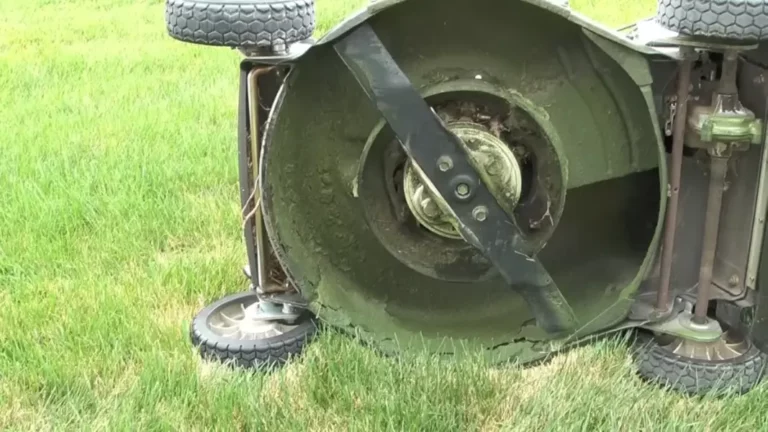When Should You Stop Mowing Your Lawn Before Winter?
Mowing is an important component of keeping a beautiful and healthy garden. Regular watering and fertilization are just as crucial as proper mowing.
But, in order to achieve the greatest results, when should you stop mowing your lawn before winter?
Stop mowing your lawn before winter when temperatures consistently drop below 50 degrees Fahrenheit, typically in late October or early November. This allows the grass to enter dormancy and prepare for the colder months.

Why Is It Important to Prepare Your Lawn for Winter?
Preparing your lawn for winter is crucial to ensure its health and vitality during the colder months and to set it up for a strong start in the following spring.
Protects your lawn from winter damage
The cold winter wind evaporates the moisture from the grass blades. As a result, the grass dries out and is unable to restore moisture.
All of these cause grass to die. So, it is critical to prepare the lawn for winter. Lawn preparation can protect it by maintaining moisture in it and boosting its health.
Promotes healthy growth in the spring
Aerating the turf to decrease compaction is part of pre-winter lawn care. This also allows fertilizers and water to reach the roots more easily. And reviving bare spots with compost and seed. As a result, the grass remains healthy and begins a happy spring!
Saves time and money on lawn care
If you prepare your lawn for winter, your lawn gradually appears to be healthy. You don’t need to pay for additional weeds, bugs, and so on. You also don’t need to pay special attention to your yard.
When Should You Stop Mowing Your Lawn Before Winter?
The timing for when to stop mowing your lawn before winter can vary depending on factors like grass type and temperature.
Climate and weather patterns
Temperature: When the daily temperature remains between 40 and 50 °F, grass growth slows down. When the grass goes dormant, you shouldn’t mow the yard any longer.
Humidity: Because grass need moisture to keep its leaves healthy-looking and green, a dry atmosphere makes it wilt before the first frost.
Light: If there isn’t enough sunlight, grass stops growing due to the lack of support for photosynthesis.
Grass type and growth rate
Grass species have different preferences for sunlight, moisture, and temperature. Before stopping winter mowing, know your grass type.
For cool-season grasses (Kentucky bluegrass, perennial ryegrass, tall fescue), mow until it stops growing below 40°F, keeping it at 2.5-3 inches.
For warm-season grasses (bermudagrass, zoysiagrass, St. Augustinegrass), stop when it becomes dormant below 50-55°F, cutting it to 1.5-2 inches.
Lawn usage and foot traffic
To avoid damaging your lawn, you should stop mowing before winter once the grass becomes dormant and the air or soil temperature falls below 50-55°F.
This allows the grass to prepare for winter and reduces the risk of injury from foot traffic.
Fertilizing Your Lawn
Fall fertilization gives your grass a head start for the following spring by promoting early greening. It provides a steady release of nitrogen throughout the winter, preparing the grass for a better chance of greening up.
Best time to fertilize
Cool-season grasses like bluegrass, fescue, or rye benefit from cooler weather and should be fertilized in early fall or late spring.
Warm-season grasses like Bermuda, Zoysia, or St. Augustine grow best in the summer and should be fertilized in late spring or early summer.
In Australia, the spring is considered the ideal time to fertilize lawns as the warmer weather stimulates new growth.
Types of fertilizers to use
- Cool-season grasses benefit from a high-nitrogen, high-potassium fertilizer applied in autumn.
- Warm-season grasses benefit from a potassium fertilizer combined with a winter pre-emergent to prevent winter weeds.
- Interize is a winter fertilizer that promotes grass food storage and root growth.
- Slow-release fertilizers or organic compost can provide long-term nutrients to the grass.
Aeration and Overseeding
Overseeding and aeration are two vital practices for maintaining a healthy lawn. These two steps are additionally necessary before winter. The benefits of aeration and overseeding are given below:
- Aeration alleviates soil compaction, improving growth and drainage.
- It promotes root formation, increasing resistance to stress and drought.
- Aeration enhances water and fertilizer intake, reduces drainage, and saves money.
- It improves thatch control, lowering the risk of fungal and pest issues.
- Aeration improves grass color and health by increasing nutrient availability.
- Aeration allows for pH modification, maximizing the benefits of soil additives.
Fall is the ideal time to plant cool-season grasses as they grow most vigorously in autumn and spring. On the other hand, warm-season grasses should be aerated and overseeded during spring or early summer.
Aeration and overseeding require planning, preparation, and aftercare, along with the necessary equipment such as an aerator, spreader, rake, and sprinkler.
If unsure, seeking assistance from a lawn care company or local hardware/garden business can provide guidance and access to rental or purchase of the required tools.
Lawn Equipment Maintenance for Winter
Cleaning and storing your lawn mower
- Clean the mower after each use, removing debris and grass clippings.
- Check and clean the air filter regularly, replacing it if necessary.
- Sharpen the mower blades to ensure a clean cut.
- Change the oil and replace the spark plug according to the manufacturer’s recommendations.
- Store the mower in a dry, protected area to prevent rust and damage.
Winterizing your irrigation system
- Turn off the water supply to the irrigation system.
- Drain any remaining water from the system to prevent freezing and damage.
- Insulate exposed pipes or use heat tapes to protect against freezing temperatures.
- Remove and store any above-ground sprinkler heads or other vulnerable components.
- Conduct a final inspection of the system to identify any leaks or repairs needed before winter.
Best practices for stopping lawn mowing before winter
- Grass growth typically slows down in late October or early November.
- Adjust the mowing height gradually and leave the grass slightly longer before winter.
- Aim for a winter grass height of around 2 inches, but this may vary depending on the grass species.
- Remove fallen leaves, grass clippings, and debris from the lawn after mowing to promote a healthy dormant period.
Frequently Asked Questions (FAQs)
When should I stop mowing my lawn before winter?
It is generally recommended to stop mowing your lawn when the grass enters dormancy and temperatures drop below 50 degrees Fahrenheit. For cool-season grasses, this typically happens in late October or early November when daytime high temperatures consistently stay below 50 degrees Fahrenheit.
Can I mow the lawn after the first frost?
Mowing the lawn after the first frost is generally safe, but it’s important to wait until the grass has thawed and dried before mowing. Mowing frozen or frost-covered grass can cause damage to the grass blades.
Is it necessary to mow the lawn one last time before winter?
Mowing the lawn one last time before winter is generally recommended to ensure the grass is at an appropriate height for winter dormancy.





